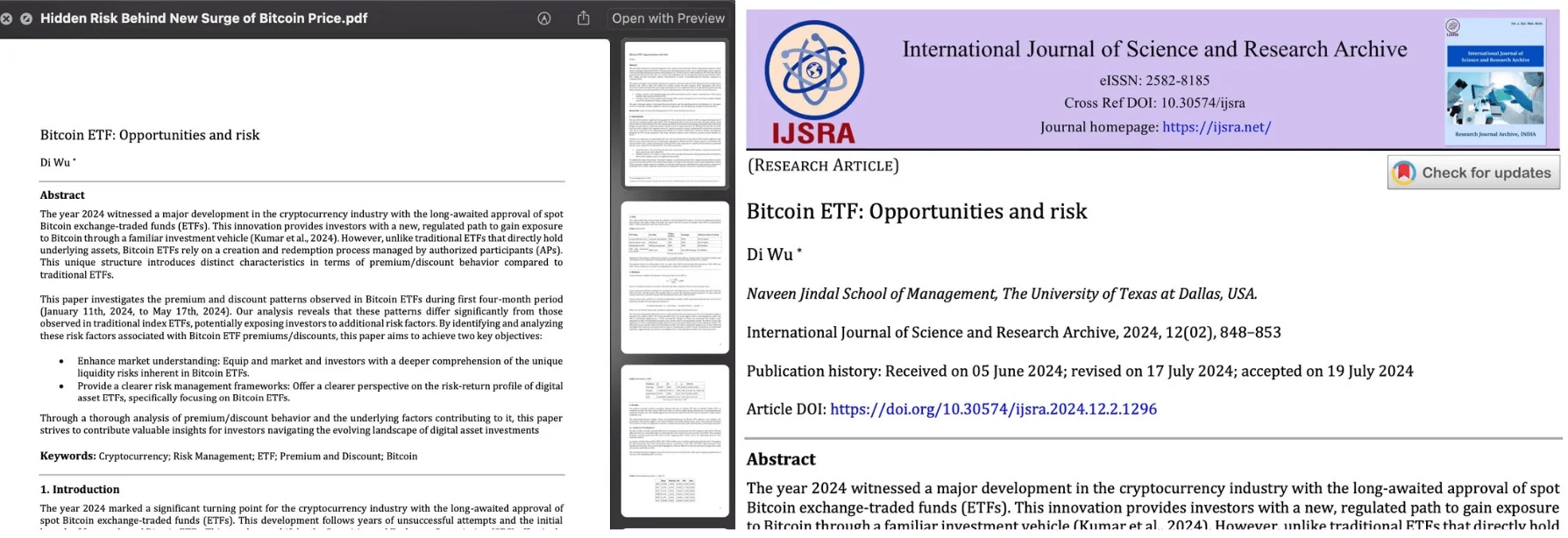
2024-11-8 00:16:42 Author: securityaffairs.com(查看原文) 阅读量:4 收藏
DPRK-linked BlueNoroff used macOS malware with novel persistence
Pierluigi Paganini
November 07, 2024

SentinelLabs observed North Korea-linked threat actor BlueNoroff targeting businesses in the crypto industry with a new multi-stage malware.
SentinelLabs researchers identified a North Korea-linked threat actor targeting crypto businesses with new macOS malware as part of a campaign tracked as “Hidden Risk.” The attackers, linked to BlueNoroff and past RustBucket campaigns, used fake cryptocurrency news emails and a malicious app disguised as a PDF.
SentinelLabs researchers speculate DPRK-linked actors targeting the crypto industry since July 2024 as part of the Hidden Risk campaign. The attackers exploit a unique, novel persistence method via the zshenv configuration file.
The initial attack vector is a phishing email containing a link to a malicious application disguised as a link to a PDF document relating to a cryptocurrency topic such as “Hidden Risk Behind New Surge of Bitcoin Price”, “Altcoin Season 2.0-The Hidden Gems to Watch” and “New Era for Stablecoins and DeFi, CeFi”.

The dropper mimicking the PDF file is hosted on delphidigital[.]org.
Phishing messages impersonate a real person and forward a message from a crypto influencer, while the PDF copies genuine research on Bitcoin ETFs to appear legitimate.
The first stage is a Mac application written in the Swift programming language.
“The first stage is a Mac application written in Swift displaying the same name as the expected PDF, “Hidden Risk Behind New Surge of Bitcoin Price.app”. The application bundle has the bundle identifier Education.LessonOne and contains a universal architecture (i.e., arm64 and x86-64) Mach-O executable named LessonOne.” reads the report published by SentinelLabs. “The application bundle was signed and notarized on 19 October, 2024 with the Apple Developer ID “Avantis Regtech Private Limited (2S8XHJ7948)”. The signature has since been revoked by Apple.”
Once launched, the application downloads and displays a decoy PDF file retrieved from Google Drive, that fetches the second-stage executable from a remote server and executes it. The second-state malware is a Mach-O x86-64 executable which can only run on Intel architecture Macs or Apple silicon devices with the Rosetta emulation framework installed.
The malware binary, named “growth,” is a 5.1 MB unsigned C++ file, available for researchers to analyze via SentinelLabs.
The backdoor uses a novel persistence technique by exploiting the Zsh configuration file, .zshenv, ensuring it is sourced for all Zsh sessions. This approach bypasses macOS 13 Ventura’s user notifications for new persistence items, making it harder to detect. This is the first time the researchers observed this technique used in attacks in the wild by malware authors, providing more effective persistence than prior methods, which relied on files like .zshrc that only activate with interactive sessions. The “growth” binary installs this mechanism, creating a hidden marker file in /tmp/.zsh_init_success to confirm successful setup.
Analysis of network infrastructure in the Hidden Risk campaign strengthens the attribution of this attack to North Korea’s BlueNoroff threat actor.
BlueNoroff used Namecheap and hosting providers like Quickpacket, Routerhosting, and Hostwinds to set up crypto-themed infrastructure. The latest campaign mirrors an August 2024 macOS malware attack and uses notarized malware signed with hijacked Apple developer accounts. This shift in tactics shows BlueNoroff’s adaptability and awareness of public reports on their activities, continually refining their methods to target the crypto and Web3 sectors.
“Over the last 12 months or so, North Korean cyber actors have engaged in a series of campaigns against crypto-related industries, many of which involved extensive ‘grooming’ of targets via social media. We observe that the Hidden Risk campaign diverts from this strategy taking a more traditional and cruder, though not necessarily any less effective, email phishing approach.” concludes the report. “Despite the bluntness of the initial infection method, other hallmarks of previous DPRK-backed campaigns are evident, both in terms of observed malware artifacts and associated network infrastructure, as discussed extensively throughout this post.”
Follow me on Twitter: @securityaffairs and Facebook and Mastodon
(SecurityAffairs – hacking, BlueNoroff APT)
如有侵权请联系:admin#unsafe.sh